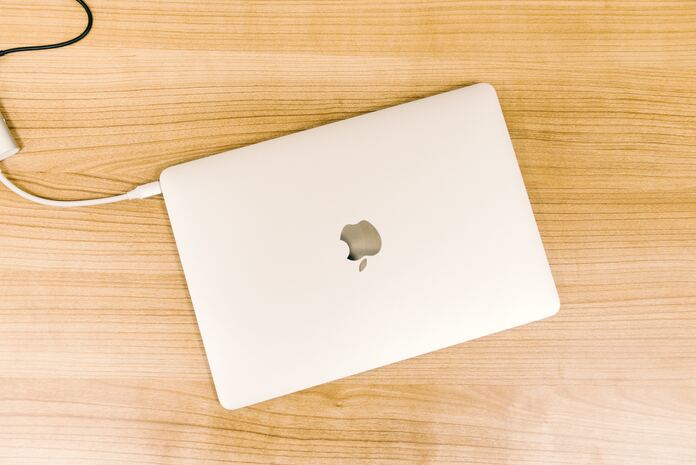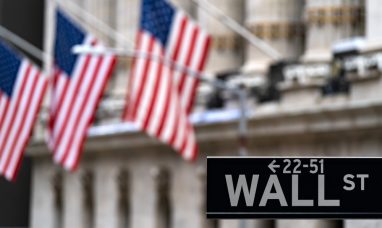Apple Stock (NASDAQ:AAPL)
Apple Inc. (NASDAQ:AAPL) is currently trading for around $172 per share, giving it a market cap of over $2.7 trillion. I understand the rule of huge numbers, but I still feel there is a plausible thesis for Apple stock to rise 30% or more over the next three years. I’d like to delve a little deeper into that.
The Commitment
The Apple ecosystem is one of the most well-coordinated and integrated product offers in the technology industry. It usually starts with an iPhone, then an iPad, an Apple Watch, and finally an Apple TV. Customers may have just obtained an Apple credit card and begun depositing cash back into an Apple savings account in preparation for their next phone purchase.
This kind of consumer devotion drew Warren Buffett to Apple in 2017, and the ecosystem has only grown stronger since then.
Some may argue that the Apple brand has already created a customer base, and those who do not now use Apple products are unlikely to switch. Recent statistics, however, contradict this statement, with Apple taking over 30% of the mobile OS market in the last month, and the trend appears to be growing.
Higher Margins and Services
The increased number of Apple ecosystem customers is generating a rise in service revenue. While this may come as no surprise, it is an important component of Apple’s future growth.
The company’s services sales were less than $20 billion in 2015. It is estimated to reach $83-85 billion this fiscal year, reflecting a 5.5% increase. Apple’s services sector will generate approximately $59 billion in total income, with gross margins ranging between 70 and 71%.
Is this a record-breaking rate of growth? No, but it is likely to continue without much disruption. This is due to a steady client base, and when Apple’s service offerings improve, users are more likely to add new services rather than abandon existing ones.
To present a more fair viewpoint, I’d like to bring up a handful of concerns.
To begin, Apple is having difficulty innovating within its service offerings. Apple Music is unable to compete with Spotify, and Apple TV offers limited content, leading cost-conscious users to quit and resubscribe as needed. Apple News and Fitness are specialized offerings with a plethora of comparable competitors. Apple One, in my opinion, is overpriced and maybe more tempting if the family plan was dropped to $24.99, but with slightly smaller margins.
Second, regulators frequently target the App Store. Despite Apple’s continued 30% discount (15% in other circumstances), this situation may not remain permanently. iOS 17 is rumored to include sideloading, allowing users to install apps other than those available in the App Store.
The mechanics of how sideloading will be implemented are unknown, but Apple is unlikely to make it simple and straightforward. Furthermore, it is debatable how many people will resort to the hassle of sideloading in order to save a few dollars on an app.
New Releases
Apple hasn’t released a fully new product in quite some time, but that is slated to change this year with the debut of an AR/VR headset aimed squarely at Meta Platforms, Inc.’s (NASDAQ:META) Oculus offering.
Specifics on the product are sparse, as is customary for Apple. However, we expect the headset will be launched at WWDC in June, to have mixed reality capabilities (both AR and VR), and to cost around $3,000.
With a price tag of $3,000, the gadget will most likely appeal to a small clientele in its initial incarnation. This has been true for many of Apple’s past products. The original iPhone was revolutionary when it debuted in 2007, but it was the iPhone 3G, released a year later, that truly changed Apple into the corporation we know today. The mixed-reality headset could take a similar path.
While the $3,000 price tag may raise eyebrows this holiday season, a second-generation headgear might be beneath Christmas trees in 2024. This move may have an impact on Apple’s existing goods, such as the iPad and Apple TV, but it also puts the business on a more profitable path.
Furthermore, the headset’s technology will contribute to breakthroughs and a better understanding of Apple Glasses, a futuristic device that has the potential to eventually replace smartphones.
To summarize, Apple is thriving in terms of innovation. However, the company’s emphasis on excellence before release may be regarded as a disadvantage in some circumstances.
Purchases and Cash Distributions
Investors are divided on the efficiency of Apple’s share repurchase policy. Those who have owned the shares for a long time will surely benefit from the buybacks. However, those on the outside are left wondering, “Why didn’t they invest that half-trillion dollars in new products?”
Regardless of what many think, Apple and stock buybacks are nearly synonymous. During its Q2 earnings report, the company underlined this connection by launching a $90 billion program.
Apple has retired almost 4 billion shares in the last five years, valued at more than $700 billion at current prices. This outstanding achievement shows no signs of abating.
Is the present stock price prohibitively expensive for buybacks? Perhaps. Critics claim that the buybacks are taking place at inflated prices. However, some critics have been making similar assertions for years, and hopefully, they haven’t been shorting the stock with their own money.
Apple’s share repurchase program is estimated to provide about 3% of growth in the future years. This strategy, when combined with improving margins and a growing top line, may propel the stock price to $225.
The Road to $225
Several important reasons could boost Apple’s stock price to $225 per share. Although the road may be difficult, investors can take comfort in the idea that they are holding one of the market’s safest names. Apple is so powerful that it accounts for more than 7% of the weighting in the S&P 500.
The first component is the continuous decline in the number of outstanding shares. Apple intends to lower the number of outstanding shares from around 15.9 billion to around 15 billion during the next three years. If all other conditions remain unchanged, this move alone would raise the stock price to almost $187.
The second component is top-line revenue growth, with services playing a critical role. As Apple’s services segment expands, the introduction of AR/VR technologies will open up new service opportunities. Given a 5.5% growth rate this year, followed by 9% growth rates in each of the next two years, it is not unreasonable to expect services to become a $100 billion revenue business by FY2025. This equates to $72 billion in gross profit at a 72% gross margin.
Predicting AR/VR sales is more difficult, but this new device is unlikely to eat into any of Apple’s existing businesses. Indeed, fitness features could enhance service sales and potentially boost Apple Watch sales.
According to a recent leak, Meta has sold 20 million Quest headgear, implying that Apple may face significant competition. Apple, on the other hand, has a history of dominating marketplaces (e.g., Watch, AirPods, iPad, and iPhone). Despite the $3,000 price tag, Apple’s devoted client base might enable the corporation to sell 2 million systems in the first year, producing $6 billion in sales. Taking cues from Apple Watch’s growth, which climbed by 80% and 77% in its second and third years, respectively, Apple might sell 6.3 million headsets at an average price of $3,000 in FY25, generating $18.9 billion in sales. With an estimated 35% gross margin on Apple items, this corresponds to an additional $3.5 billion in gross income, which is most certainly an understatement.
We may imagine a situation in which Apple’s various product lines retain their current growth trajectory by combining all of these factors:
- Mac sales will fall from $40 billion in 2022 to $32 billion in 2025.
- In 2025, iPad sales will stay roughly stable at $30 billion.
- iPhone sales have increased slightly, rising to $210 billion from $205 billion last year.
- Wearables, including the AR/VR headset, grow to a $64 billion business, up from roughly$41 billion now.
- Services grew to $100 billion, up from around $80 billion today.
In this scenario, product sales would earn $336 billion each year, with services contributing an additional $100 billion. This translates to a gross income of $192 billion and a net income of $112 billion.
Although a 30x price-to-earnings (P/E) multiple may appear extreme, Apple has consistently maintained a 30x multiple in recent years. Assuming that this growth continues and the share count decreases, the multiple is unlikely to contract. The 30x multiple results in a market capitalization of $3.35 trillion. With 14.9 billion outstanding shares, the stock price would be $225 per share.
Alternatively… The Road to $120
In a worst-case scenario, Apple might face falling revenue, a poor VR product launch, and contracting margins as the company’s popularity declines.
In this less hopeful scenario, Apple may encounter:
- Slower increase in services, with only $85 billion by FY25.
- Gross earnings from services have been reduced by 65%.
- A wearables division that has grown modestly to $43 billion despite poor VR/AR results.
- iPhone sales falling to $180 billion.
Apple Inc. would make $285 billion in product revenue under these conditions. With lower margins, this would equate to $94 billion in gross earnings and $82 billion in net income. Share buybacks would continue, therefore the same 14.9B share count would be appropriate. In this case, a 22x multiple would result in a stock price of $121 per share.
Conclusion
Because of its defensive character, Apple Inc. commands a premium in the market. As described in the conservative 2025 vision above, it is a solid corporation with the potential for significant future revenue growth.
This forecast is based on a significantly declining Mac base, flat iPad sales, flat wearables (excluding new items), and somewhat consistent iPhone sales. There may be disagreements over the 30x price multiple, but if Apple meets these benchmarks, it should be able to keep it.
Those who are skeptical or concerned about the impact of larger economic variables on Apple could consider selling put options in the $140-150 level. On the August 18th expiries, a $2 premium is currently available.
The alternative, less optimistic picture is offered to show that even if numerous things go wrong, the downside risk for Apple Inc. appears to be approximately 30%.
Featured Image: Unsplash
















